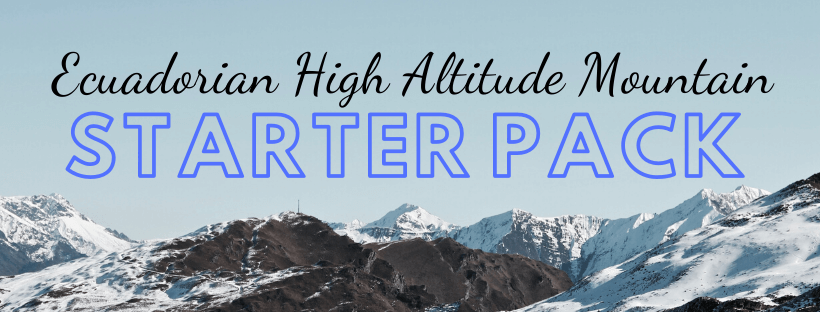“A 57-year-old Swiss woman lost her life when she climbed the Cotopaxi volcano in Ecuador. Two of her countrymen were also wounded the accident that took place as she crossed a “crevasse” or a pit while making the 5,900-metre ascent. All three hikers reportedly fell into the crevasse. Local mountain guides managed to rescue the two wounded people and bring them to a local shelter. One hiker was flown by helicopter to a hospital in the Ecuadorian capital, Quito.”
These incidents are inevitable especially when you go hiking on a high-altitude mountain like the ones found in Ecuador. No matter how to fit or prepared you are, the unfamiliarity of the terrain will really you caught you off guard.
To help you somehow prepare a hike in the Ecuadorian Mountains that are really known to have high-altitudes, you are at the right place! We will share with you tips and tools to prepare your Ecuadorian Mountain Trip. Things to prepare for a high-altitude trek:
Medicine. High-altitude travel, for mountain climbing, trekking, or sightseeing, has become very popular. Therefore, the awareness of its dangers has increased, and many prospective travelers seek medical advice before setting forth on their trip. Here’s a list of a commonly brought medicine by hikers.
Diamox tablets. This is for Altitude Sickness.
Blister plasters. You really need a lot of this, believe me.
Painkillers such as Ibuprofen/Acetaminophen/Aspirin. For altitude-induced headaches and also for unexpected body pains you might acquire during the trek.
Diarrhea tablets. For possible tummy wars.
Prescription Medicine, Anti-biotics. Meds that your doctor prescribed.
Vitamins. For strong resistance and avoid catching cough, flu and colds.
Melatonin/ Acetazolamide, or other sleep aid. To help you doze off when you have difficulty catching Z’s.
Clothes. This is a very important element to prepare because this is your first line of protection for your body. This will either give you comfort and protection or a terrible time during your “leisure” time.
Hiking Pants. Usually lightweight, quick-drying, a lot of pockets and most especially comfortable.
Polypro Tops. Breathable Polypropylene material wicks moisture away from the body and providing excellent thermal qualities.
Down Jacket. Insulated using the soft under feathers from ducks or geese. Down has incredible insulating properties because the loft (or fluffiness) of the material creates thousands of tiny air pockets that trap warm air and retain heat.
Long Underwear. Underwear that covers the legs and that is worn in cold weather
Gloves. Windproof fabrics, non-slip palm design and Palm Simulated leather
Hiking shoes. lightweight, incredible traction, comfort, and quick dry times
Rain Pants. windproof and waterproof polyurethane surface fabric for full weather protection from heavy rainstorms.
Others. On this list are the “JUSTIN CASE” or JUST IN CASE stuff you might need when the need arises along your trip. Better safe than sorry.
Cash
Credit cards, ATM card (first check for international bank fees)
Trekking poles (collapsible)
Sunglasses, straps
Water bottles, Camelback
Steripen/water filter/purification tablets
Pocketknife
Notebook, pens
Books, playing cards, games, crossword puzzles, frisbee, kite
Energy bars, hard candy, snacks, comfort foods
Duct tape
Carabiners (for attaching things to your day pack or hanging things to dry)
Bandana
Guide books, maps, language books
Binoculars
Small umbrella
Banner/flag/sentimental item to hold up in an important place
Eyeglasses/contacts, case, solution
Disinfectant, antiseptic cream, antibiotic ointment
Gauze bandages and tape
Trekking and mountain climbing are getting more popular now and many are not equipped in doing so. We hope that we helped you be educated on what things to prepare and bring during your most awaited mountain trip. Mountain trips don’t need to be tragic. It should be fun, fulfilling and amazing.

